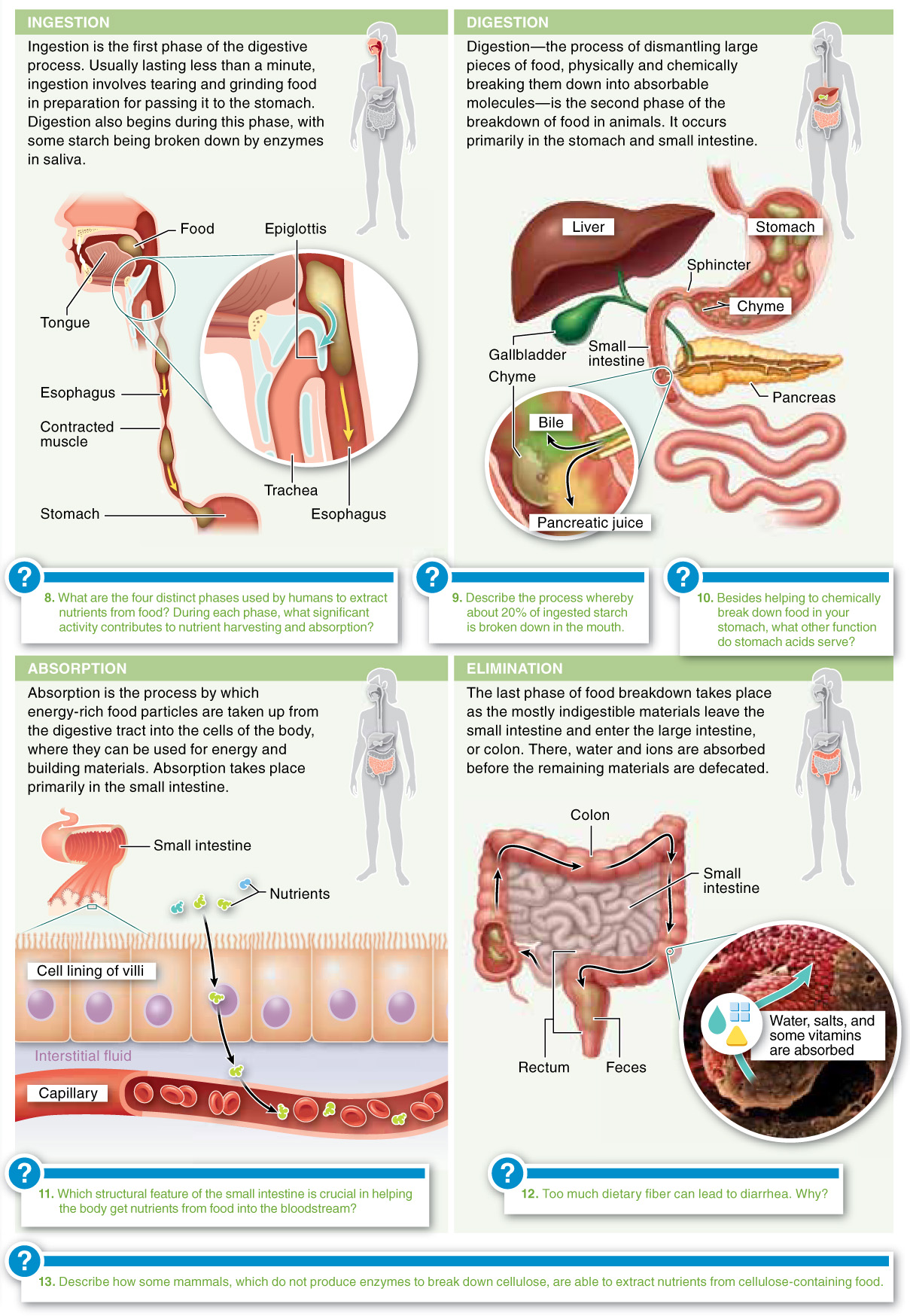22.8–22.13 We extract energy and nutrients from food.
The digestive process in humans includes four distinct phases: ingestion, digestion, absorption, and elimination.

915
Question 22.33
The human appendix is much smaller than the koala’s cecum. This is because:
- a) humans take supplements to obtain enough vitamins and do not need the extra vitamins produced by the bacteria housed in the appendix.
- b) humans aid the digestive process by marinating and cooking foods, so they do not require a large appendix to aid food digestion.
- c) humans maintain bacteria in their intestine rather than in their appendix, so the organ does not need to be as large as a koala’s cecum.
- d) in humans, no cellulose-
digesting bacteria live in the appendix and, unlike the koala’s cecum, it has no digestive function at all. - e) humans get a greater proportion of their nutrients from meat than do koalas, so they do not need as large an organ to digest the plant matter they eat.

Question 22.34
Cows have large populations of bacteria in their digestive systems. Which of the following best explains why?
- a) The mutualistic microbes combat the harmful microbes that may enter a cow’s body with its food.
- b) Cows are able to use celluloseproducing bacteria to help them digest their food.
- c) Most cows do not actually have large populations of bacteria in their digestive systems. Only infected cows have these microbes.
- d) Scientists put the microbes there so that they can study how the microbes affect cows’ digestion.
- e) The microbes metabolize the cellulose in the plants that cows eat.

Question 22.35
The spices that many humans use to season their food:
- a) are generally compounds produced by plants to reduce their risk of being eaten.
- b) are actually dead microorganisms.
- c) consist primarily of amino acids.
- d) are the chief cause of ulcers.
- e) can be grown only in tropical regions of the world.
